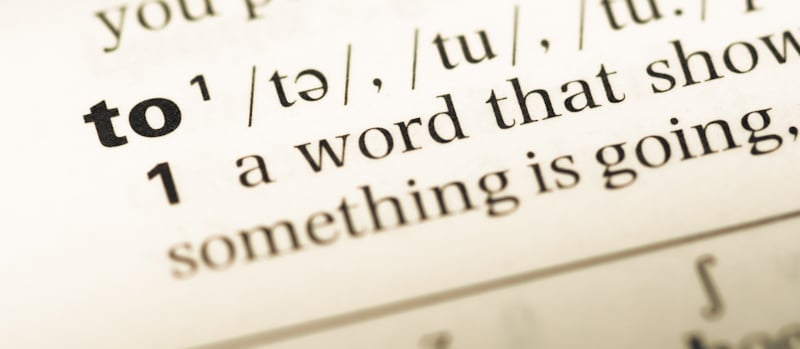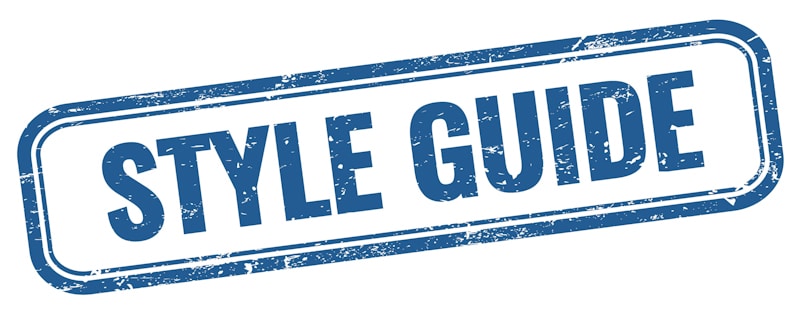You are almost done writing the story. Giving the final touches to it should be a piece of cake. You finally came up with the perfect title, and just when you are about to type it in, you realize that you don’t know whether to capitalize the word “to” in that title. What’s it going to be?
The preposition “to” should not be capitalized in a title. According to most style guides, prepositions of fewer than four letters should not be uppercased. The only exception to this rule is if “to” is used as an adverb in the title. If and only then, it would be capitalized.
With so many rules when writing in English, capitalizing all the words in a title should be a given. But not when a simple word can be used for different functions in a sentence. Determining what the role in that title is should be the first thing to check.
What Does Grammar Have To Say About This?
To better understand the role of the word “to” in a sentence, we need to see where it comes from. In traditional grammar, parts of speech are divisions where all words with similar grammatical properties are classified. These categories determine the function of each word. In the English language, there are eight categories: noun, pronoun, adjective, adverb, verb, preposition, conjunction, and interjection.

The word “to” falls under the preposition’s category (with the least common use as an adverb), and its use is to link a noun to another word; but in the English language, many words can have more than one role. For example, “water” can be a noun or a verb (The plants need water; I’m going to water them myself.). “To” is a word that can also have a different job within a sentence or question. The first thing to do would be to ask yourself, what role is this word playing in this sentence?
- To, as destination or direction. Where are they going to go this weekend? They are going to the amusement park on Saturday.
- To, as a receiver of an action. Who are you giving the keys to? I’m giving them to my sister.
- To, as a preposition of time. We are going to close for the holidays, from Christmas to after new years eve. After that, we will be open every day from nine to five.
- To, as a preposition to approximate numbers. They are requesting a catering service for thirty to forty-five people. This will probably cost them fifteen to twenty-one dollars per person; quite expensive!
- To, as a preposition after nouns. The boy sitting next to the door is the one needing the book. Her comments to Julian were utterly unwarranted.
- To, as a preposition after verbs. I object to your comments; they were entirely uncalled for. Studying, to others, is pointless.
- To, as a preposition after adjectives. I can’t believe how many people can be allergic to chocolate. An employee can be loyal to a company if they believe in it.
- To, to form an infinitive. My daughter loves to wear dresses but chooses pants if she is going to play. I prefer to cook to avoid doing the dishes.
- To, as an adverb. Pull the door to, and lock it. A drop of whiskey brought him to.
“To” In A Title
According to the title case style, using “to” as a preposition should not be uppercased anywhere when writing unless it is at the beginning of a sentence. If used as an adverb, this being a much rarer case, it can be uppercased. But when it comes to title cases, there could be some exceptions, which will be addressed below.
Title case or headline case is a style of capitalization used for rendering titles of published writing works. Computer programs such as MS Office and PowerPoint already come with this option; this makes it easier to edit a title in a document.
Publisher Rules
Looking into capitalization rules for the title of an essay for school or a proposal for an office Christmas party is not a life or death situation. Complicated as it may seem, whether you capitalize a word that is not supposed to be uppercased won’t cause significant damage.
But if we are talking about publishing, capitalization in a title is essential. Back in the days of typewriters, book titles had to be underscored. Since they didn’t have programs to transform those words to italics as we have now in this digital age, it made sense that industry correspondence and interdepartmental memos had their titles in all caps. It just saved a bunch of time!
Some Exceptions In Publishing
Capital letters have been widely accepted in the world of publishing because they draw attention to the reader; they can be appreciated not only in book titles but also in printed headlines. It emphasizes the book’s name. Sometimes, when the author’s name is publicly recognized, they choose to capitalize everything on the cover.
On the other hand, some book titles are written all in lowercase. No capitalization on the title seems to be more of a graphical choice made by, most likely, the editors, the typesetter, and the cover designer. When exceptions like this happen, the rules of capitalization are nullified, and there will be no need to follow a style guide for writing.
There are a few options to go with when writing a title. If you decide to use a typical case such as the title case, prepositions such as “to” will remain lowercase, but adverbs will be uppercased. Some exceptions to that rule would depend on the style guide you’re using to write with.

With the AP Style guide, which writers mainly use in journalism, the preposition “to” can be capitalized when used in an infinitive. But let’s see what a sentence with “to” can look like when used as a preposition and as an adverb in four different style guides:
- Chicago Manual of Style, 17th edition.
When She Came To, I Was Walking through the Door Ready to Scream.
- AMA Manual of Style, 11th edition.
When She Came To, I Was Walking Through the Door Ready to Scream.
- Associated Press Stylebook, 55th edition,
When She Came To, I Was Walking Through the Door Ready To Scream.
- The New York Times Manual of Style and Usage, 5th edition.
When She Came To, I Was Walking Through the Door Ready to Scream.
Depending on the role of the word in a title, some rules may apply when it comes to the style used. Most style guides agree on the rule that if “to” is part of a phrasal verb, it should be ruled out as a preposition, and it will require capitalization. In the event of a bizarre case where a title chooses to end in a proposition, most style guides will capitalize it since it would be the last word of the title.
On The Face Of A Dilemma
There’s a saying that goes “cross that bridge when one comes to it,” which means not to worry about possible outcomes until it happens. If the title has the word “to” and you feel unsure whether to capitalize it or not, check the type of writing style you have and the best style guide that will go with it.
If you don’t want or need to abide by a style guide and continue to stress overcapitalization, take the safest bet and change the title altogether.
Shawn Manaher is the founder and CEO of The Content Authority. He’s one part content manager, one part writing ninja organizer, and two parts leader of top content creators. You don’t even want to know what he calls pancakes.

